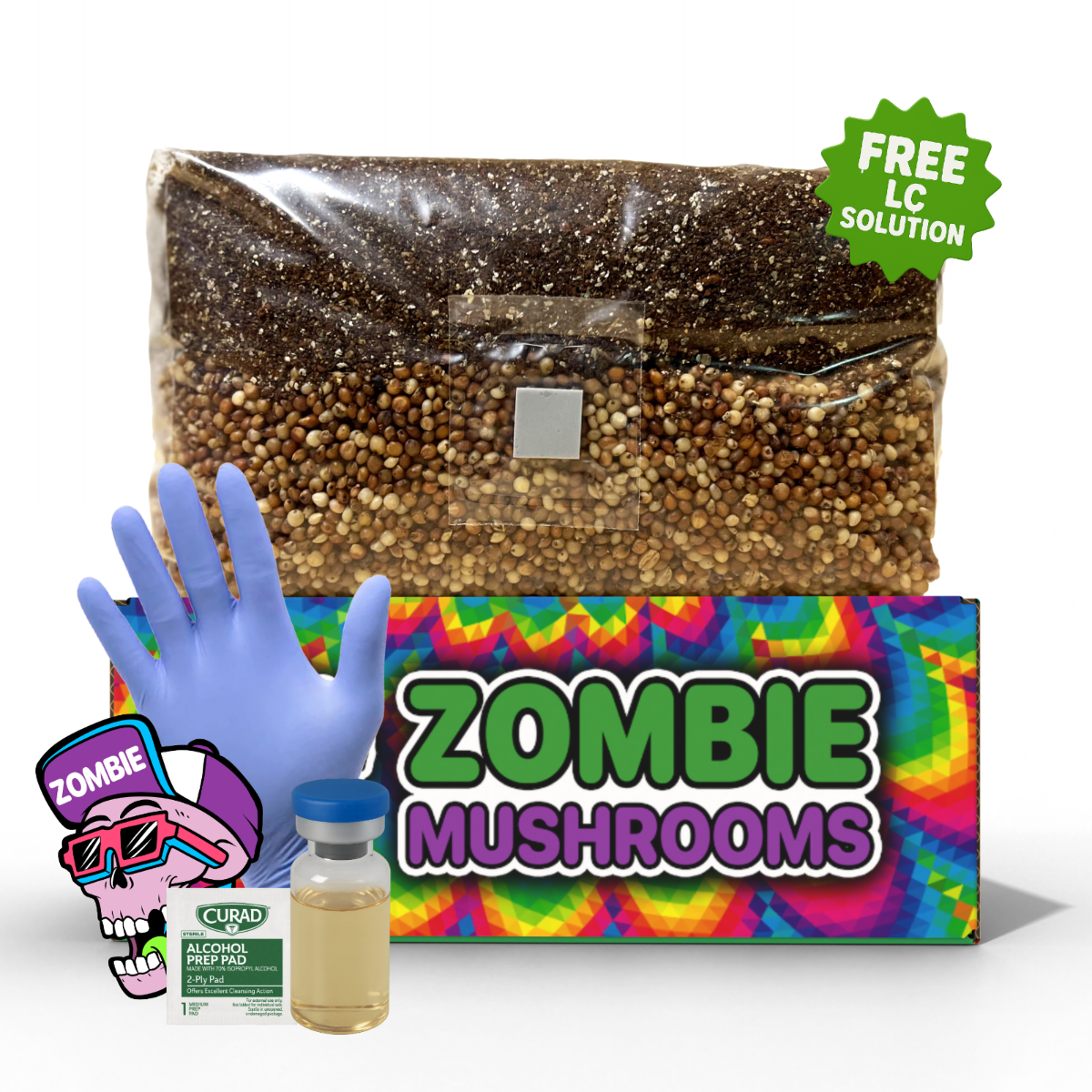- A 2004 study found ketamine boosts BDNF, essential for memory and neurogenesis.
- Ketamine stimulates neuroplasticity, enhancing learning and cognitive adaptability in aging brains.
- Clinical trials show ketamine can rapidly relieve treatment-resistant depression.
- Early evidence links ketamine to reduced inflammation and mitochondrial protection in brain cells.
- Experts stress ketamine must be clinically administered due to dependency and misuse concerns.
People looking for ways to age well often use collagen supplements, anti-aging creams, and lifestyle adjustments. However, a surprising substance has started to be discussed—ketamine. Known for a long time as a fast-acting anesthetic and more recently as a treatment for depression, ketamine therapy is currently being considered for its capacity to maintain mental sharpness, improve emotional well-being, and possibly rejuvenate the aging brain at the cell level. Alongside these emerging therapies, some people are also turning to mushroom monotub kits as a natural and hands-on way to explore wellness through fungi cultivation.
What is Ketamine? A Brief Overview
Ketamine, first made in the 1960s, has been used for many years as an anesthetic in both human and animal medicine. It is on the World Health Organization’s list of essential medicines because it works well for pain control and anesthesia. However, in small and controlled amounts, especially under medical supervision, ketamine has shown important potential beyond surgery.
Ketamine mainly functions as an NMDA (N-methyl-D-aspartate) receptor antagonist, affecting the glutamate system—a vital part in memory creation, thinking, and synaptic plasticity. This is different from most common antidepressants, which affect serotonin or norepinephrine. Ketamine’s effects go beyond just pain reduction: it encourages quick symptom relief in depression and may cause deep emotional insights and changes in perception.
Psychiatry has seen that ketamine used off-label, particularly esketamine (the S-enantiomer), can be helpful for major depressive disorder, especially when other treatments do not work. It is given in different ways including IV infusion, shots into muscle, and nasal sprays.

Ketamine Therapy: A New Frontier in Aging Science
The connection between aging and ketamine is now at the cutting edge of brain health study. As people live longer, it becomes more important to keep cognitive function and emotional strength as they get older. Ketamine therapy, once mainly for mental disorders, now raises questions about its role in addressing the biological and mental signs of aging.
Instead of just focusing on skin-deep anti-aging methods, ketamine offers an internal approach—starting with the brain. Aging impacts neurons and their ability to connect and communicate well. Because ketamine affects the very routes that control synaptic signaling and neuroplasticity, it is becoming a possible tool for aging-related cognitive and emotional support.
Initial studies have indicated ketamine’s ability to lessen brain inflammation, improve synapse growth, and even boost mood stability—all of which can work against brain decline caused by age. More and more doctors and researchers are considering how regular, watched ketamine therapy sessions could be part of a complete longevity plan.

The Role of Brain-Derived Neurotrophic Factor (BDNF) in Aging
Aging brains create less BDNF—a protein very important for brain health and function. BDNF supports the survival, growth, and specialization of neurons, helping with key actions like memory creation, emotional control, and cognitive flexibility. Without enough BDNF, the brain is more likely to get neurodegenerative disorders, depression, and memory loss.
The exciting discovery happened when researchers found that ketamine quickly raises BDNF amounts in the adult brain. According to an important study, ketamine starts a process that increases BDNF production, especially in the hippocampus—an area deeply involved in learning and memory.
Long-term stress and aging both lower BDNF, which is why ketamine's capacity to restore or increase this protein is so promising. BDNF also affects synaptic plasticity, the making of new neural connections, and the brain’s ability to "re-wire" itself around damaged areas—making it central to keeping thinking skills in older people.

Ketamine and Cellular Rejuvenation: Early Evidence
At the cell level, aging is marked by increasing damage, inflammation, oxidative stress, and mitochondria not working well. These biological actions reduce the health of neurons and help cause age-related illnesses such as Alzheimer’s and Parkinson’s. Interestingly, ketamine appears to step in at these molecular levels.
Although in early stages, experimental study has shown that ketamine can reduce oxidative damage and make mitochondria work better—the energy makers inside cells. Mitochondria being efficient is key for keeping neurons alive and working throughout life.
Animal studies suggest that ketamine can stimulate cell renewal and support healthy brain tissue by strengthening actions like autophagy (cell cleanup) and anti-inflammation cytokine creation. These processes slow down the cell aging process and keep neural pathways strong.
Moreover, increased synaptogenesis, which means making new synaptic connections, has been seen after ketamine is given. This backs up the idea that ketamine does not just stop aging—it may actually rejuvenate brain cells and networks that have gotten worse over time.

Enhancing Neuroplasticity and Cognitive Adaptability
Neuroplasticity, or the brain's ability to change itself, is important for learning new things, changing to new situations, and recovering from harm. Sadly, this plasticity naturally goes down with age, adding to mental rigidity and less problem-solving ability.
Ketamine has shown clear effects on improving neuroplasticity. It supports the making of dendritic spines—tiny parts on neurons that are important for communication—and boosts glutamatergic transmission. The outcome is quicker change to new cognitive tasks and more strength in thought processing.
This improved flexibility can help older adults in important ways. For example, the ability to learn a new language, start a hobby, or change emotionally to major life changes—like retirement or loss—can be greatly improved by more neuroplasticity.
People getting ketamine therapy often say they feel clearer, more creative, and mentally sharper. In conditions like thinking decline caused by age and early dementia, these benefits could mean longer independence and better life quality.
Ketamine for Depression in Aging Adults
As the older population grows quickly, depression in seniors is becoming more of a problem. Emotional things like being alone, losing loved ones, and long-term illness raise the chance of depression later in life—yet many older adults do not report their symptoms enough or do not get good treatment.
Standard antidepressants often take weeks to work—if they work at all—and are linked to many side effects that affect physical health (like weight gain, dizziness, or heart risks). This makes ketamine, with its almost instant action, especially useful for older adults.
Study supports ketamine’s effectiveness in easing depression symptoms, often within hours of being given and after just one or a few treatments. Especially for those with treatment-resistant depression (TRD), ketamine offers a life-changing choice that brings back emotional energy and reduces thoughts of suicide.
Because ketamine affects glutamate and later pathways such as mTOR (mammalian target of rapamycin), it starts a series of effects in brain circuits often not touched by common medicines. As mental well-being greatly impacts physical aging, its psychiatric use goes well with wider efforts in anti-aging care.

Emotional Resilience: A Foundation for Graceful Aging
People who are emotionally strong deal with life’s difficulties better—and aging brings many of them. From getting a smaller home to long-term illness to getting used to a slower life pace, handling these changes well can be the difference between doing well and just getting by.
Ketamine-assisted therapy, by making it easier to safely look at kept-down emotions, can help people face worries about aging and unresolved trauma. After treatment, many people say they feel less defensive, more open to change, and better at controlling their emotional reactions.
In therapy settings, ketamine often improves emotional understanding and putting things in perspective, letting people revisit life's most important moments with understanding instead of regret. This kind of looking inward does not just reduce stress—it grows inner peace, which is important for healthy aging.

Aging with Clarity: Ketamine’s Impact on Mental Acuity
Mental sharpness often shows vitality in later years. Memory weakens, decision-making slows, and attention gets shorter as we age. Yet ketamine may offer a way to stop this decline by protecting thinking pathways and even waking up quiet brain areas.
Ketamine’s ability to reduce default-mode network activity—the repeating mental "looping" that marks worry and rumination—can improve thinking. Reducing these loops helps clarity and being aware in the present moment, improving strategic thinking and memory keeping in older adults.
In addition, ketamine may break up usual thought patterns, helping older adults who may be stuck in constant worry or not being able to decide. Over time, such patterns can add to long-term stress, which makes aging worse at the cell level.
By supporting clearer thinking, ketamine may add to the years one can enjoy thinking activities, creative pastimes, and living alone—a major sign of aging well.

The Psychedelic Reawakening: Ketamine and Natural Wellness
Ketamine’s rise in the wellness world is similar to a wider return of interest in psychedelics as therapy tools. While ketamine is not really a classical psychedelic (like LSD or psilocybin), its dissociative traits can still cause deep, life-changing experiences.
Many people using ketamine therapy say they have more mindfulness, a new sense of purpose, and better self-understanding. These effects connect it to the natural wellness movement, which stresses balance, self-healing, and reconnecting to one’s surroundings and values.
When used in therapy settings with guided meditation, psychotherapy, and setting goals, ketamine becomes part of a range of tools aimed at inner renewal—adding to the physical actions usually linked to anti-aging.

A Natural Pairing: Mushrooms, Mycology, and Psycho-Spiritual Healing
At Zombie Mushrooms, we support the good combination of ketamine therapy and mushroom-based wellness. Functional mushrooms like lion’s mane are known for their brain-protecting qualities and ability to encourage Nerve Growth Factor (NGF). Together, these actions may greatly increase benefits for aging people.
Also, psilocybin—a psychoactive part from “magic mushrooms”—has some things in common with ketamine, including supporting openness, ego lessening, and emotional realignment. While still being reviewed by regulators, psilocybin and ketamine create a new area in rethinking spiritual aging and emotional growth.
This good combination shows a return to complete, joined-up approaches—the kind where science and old wisdom come together to support long life not just in years, but in energy of the human experience.

Important Safety Considerations for Ketamine Use
Ketamine's therapy promise does not remove its risks. Using it wrongly for fun can cause mental and physical harm, including bladder problems, addiction, and long-term thinking issues.
Clinical ketamine therapy uses exact amounts, checks for reasons not to use it (such as schizophrenia or past drug abuse), and often includes follow-up psychotherapy to help process the experience. Using ketamine wrongly without these controls can cause dissociation, seeing things that are not there, and confusion.
People thinking about ketamine treatment should get a full medical check and only join programs watched by licensed professionals. Further, while current study is promising, ketamine’s long-term effects—especially over months or years—need more strong study to decide best ways to use it for aging.
Is Ketamine the Future of Anti-Aging Therapy?
Whether used to improve mood, sharpen thinking, or reduce brain damage, ketamine offers a leading-edge way to age well. Its impact on aging and ketamine’s capacity to improve neuroplasticity, support emotional wellness, and protect brain cells make it a possible game-changer in complete anti-aging therapies.
While it is not a quick fix, ketamine goes well with a wider way to wellness—one that includes good food, mushroom-based nootropics, mindfulness, and safe, guided study of the mind’s healing powers.
For those wanting to keep energy and clarity as they age, ketamine therapy, when given responsibly, could be a truly life-changing part of that process.
Stay tuned with Zombie Mushrooms for more information on aging, fungi-based therapy, and new discoveries in the growing science of human potential.



